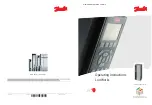
Unit configuration
Fig. 2.6/1 Arrangement of the switch-off elements in the
armature-circuit converter
Switching elements such as fuses or overcurrent
trips are used whenever overcurrents cannot
entirely be ruled out. In some configurations, this
will entail the following questions: firstly, at what
point should which protective element be incor-
porated? And secondly, in the event of what faults
will the element in question provide protection
against damage?
Possible sources of faults are:
Faults within the unit electronics
•
The power converters working mode will
usually be current-limiting; the maximum cur-
rent corresponds to the current limitation set;
if this limitation feature or one of the requisite
components fails, then the current will fre-
quently rise sharply;
output current I >> I
RATED
; Fault:
1
•
If one or more than one false firing pulses are
produced, e.g. due to component faults or
other influencing factors, then the current will
likewise rise sharply;
output current I >> I
RATED
; Fault:
2
•
If (with four-quadrant units) thyristors of both
bridges become conductive, circulating cur-
rent is the consequence; the causes involved
may be component defects or other influenc-
ing factors; the current on the three-phase side
will rise substantially;
I
AC
>> I
RATED
; Fault:
3
Defective system conditions leading to com-
mutation failure
•
In the case of regeneration, the ratio of motor
voltage and line voltage rises above 1.05,
which is followed by a situation called shoot-
through; the current rises substantially;
output current I >> I
RATED
; Fault:
4
Possible causes include:
- network malfunctions (line undervoltage)
- overspeed due to the load involved (load
accelerates motor) or due to a control error
- field supply generates a field current larger
than IF
RATED
or control error in the field
weakening range
Faults caused by components
•
Semiconductor faults can be manifested in that
a thyristor no longer fires, for example, (5a) or
in that it is permanently conductive (5b).
Depending on the system condition (four-
quadrant operation, regeneration, etc.), these
two cases will then exhibit similar symptoms
to those of cases 3 and 4.
Faults:
5a, 5b
•
Insulation faults may occur within the cabling
of the mains supply, the power converter and
the motor. These can be subdivided into faults
finally resulting in a short-circuit and those
leading to an earth fault.
- In the event of a short-circuit, the following
generally applies: I >> I
RATED
- In the event of an earth fault, depending on
where the fault has occurred, the current
may range between I = I
RATED
and I >> I
RATED
.
Fault:
6
Fusing of the armature-circuit supply
The table below shows the fault cases in which
semiconductor fuses (super-quick-acting) can
protect the drive system consisting of motor and
unit. Those cases marked (X) would protect the
motor only, and not the unit.
Semiconductor fuses
Fault
on the AC side
on the DC side
1
X
(X)
2
X
(X)
3
X
4
X
5a
⇒
3
X
5b
⇒
4
X
6
X
X
Before deciding whether fuses are going to be
incorporated only on the DC side, you must first
check in which working points the drive is used
how often (proportion of time as compared to the
overall duration of operation). The fault listing is
independent of the electronics used.
Aspects of fusing for the armature-circuit and field supplies of DC drives
II F 2-17
The following general
rule applies:
- Analogue systems
are more sensitive
and more suscepti-
ble to malfunctions
than digital systems.
- Digital systems are
able to detect criti-
cal situations much
easier and deliver
facilities to prevent
the equipment from
shut down.
M
.
.
.
.
.
3
2
2
For field supply
see Fig. 2.6/2
AC supply: public mains / plant’s mains
Cabinet
















































